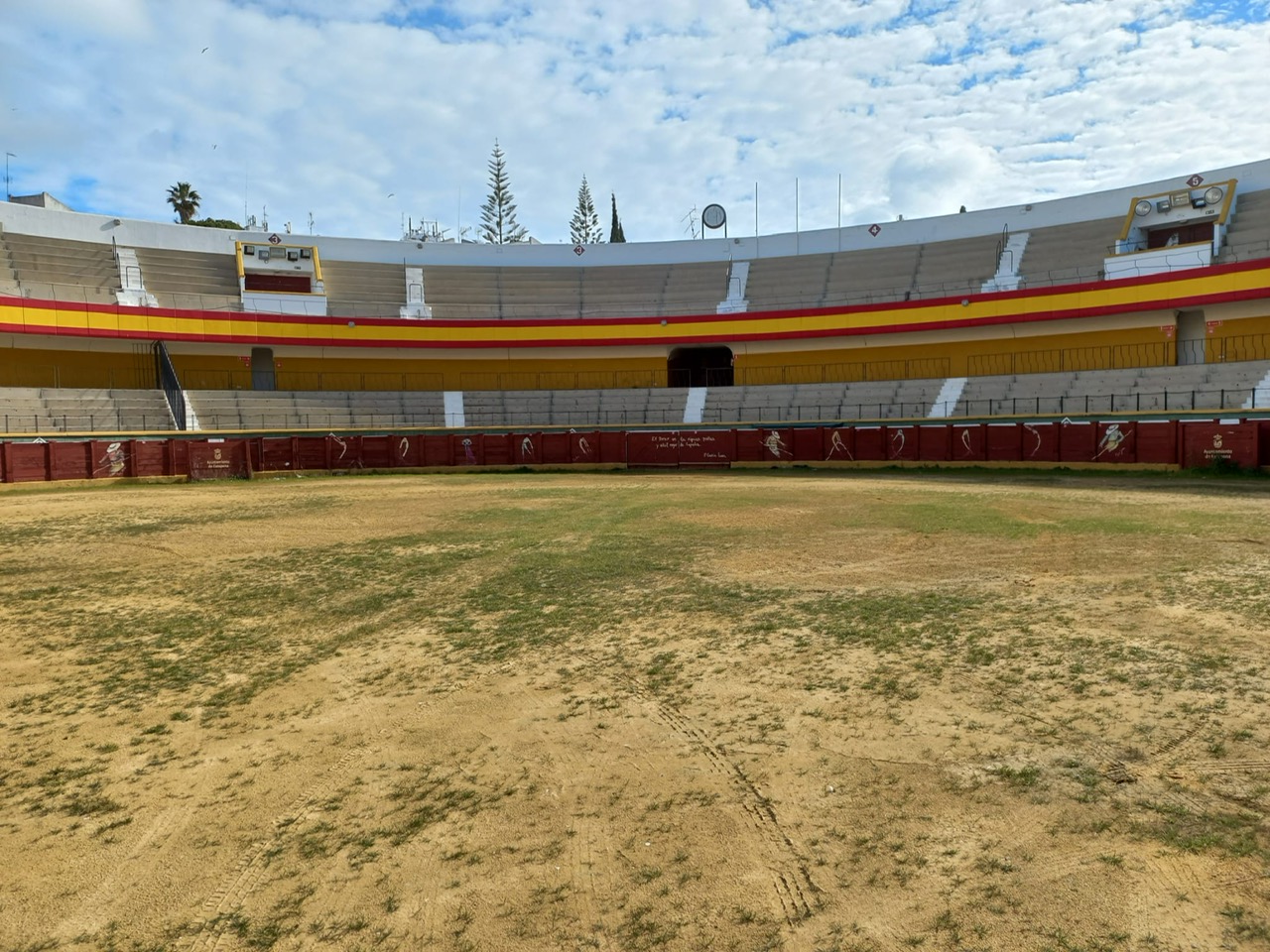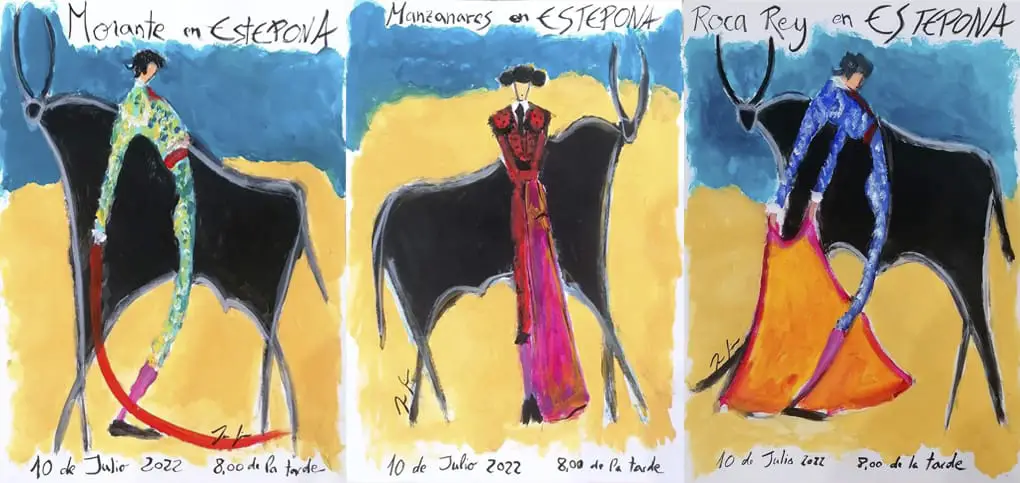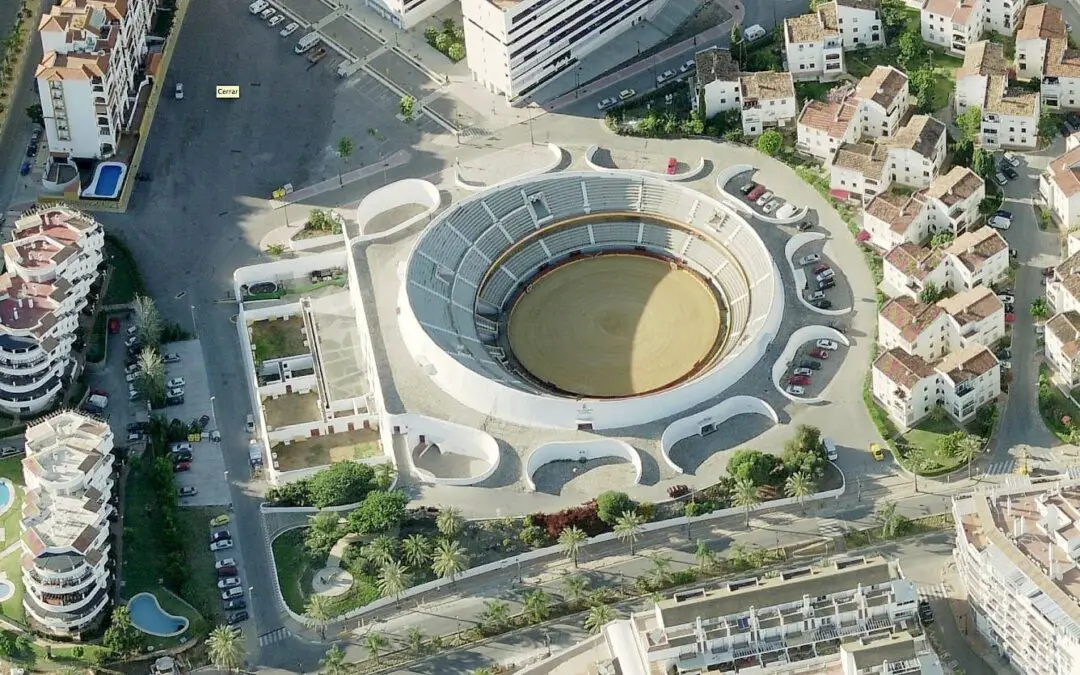Last Sunday I went to the flea market at the bullring in Estepona and I was surprised by the presence of stalls inside the bullring, in the bullring itself, where there were also several cars parked. The state of the arena is neglected, giving an image of neglect or abandonment of the beautiful bullring of Estepona. However, the seating area, (bleachers and the bullfighting arena) is in good condition and this square is not only used for bullfighting events, but also for festivals, concerts, cinema, etc.
Inaugurated in 1972, the project of the architect Juan Mora Urbano for the Estepona bullring stands as one of the most peculiar bullfighting venues and is characterized mainly by the oval shape of its stands.
Its organic architecture generates a very plastic ensemble with its white walls. It has a reinvented topography allowing to generate a unique building where the stands are developed asymmetrically, with the idea of generating the maximum number of shaded seats and with a series of sloping accesses that create spaces at street level that are used for lobbies, parking, patios, etc.
The fact that it is located on the old N-340, the historic road axis of the Costa del Sol, makes its facilities multifunctional, with the inclusion of different municipal museums, as well as different shows, which allows its continued use throughout the year, breaking with the seasonality associated with bullfighting events.
The painter of Algeciras Juan Sierra, last year 2022 painted the burladeros of the bullring of Estepona with bullfighting motifs, giving it a special character.

50 years of life.
The Estepona bullring celebrated its first half century of life last year 2022. On the occasion of the 50th anniversary of the inauguration of the bullring, the company Fomentauro, of the businessman José Luis Lara, with the collaboration of the City Council of Estepona, held a bullfight on July 10, 2022 at 8 p.m., within the Estepona Fair.
The show featured an outstanding line-up, originally composed of Morante de la Puebla, José María Manzanares and Andrés Roca Rey, and bulls from the Juan Pedro Domecq ranch. David Galván replaced Manzanares in Estepona. He pardoned Guiñol, an extraordinary bull of Juan Pedro Domecq, and left on shoulders with Morante de la Puebla and Roca Rey, who cut two and three ears respectively.
For this event, promotional pictorial works were created by the painter Juan Sierra. He created three commemorative posters for this event, one for each of the original performers.

Did you know?
The Estepona Bullring is the first asymmetrical bullring in the world. It is a unique building in that the bleachers were built asymmetrically to create as many shaded seats as possible.
Estepona Bullfighting Fair
The Estepona bullfighting fair is held in mid-July, where a bullfight is always held in honor of the festivities. The first one was held in 1972 on the occasion of the inauguration of the bullring. In that year the bullfighters Luis Miguel Dominguín, Miguelín and Paquirri fought with Carlos Núñez bulls.
The great Ronda matador Antonio Ordoñez was the first entrepreneur of this bullring.
Architecture of Estepona’s Bullring
I am not an architect nor do I want to write or copy technicalities about the bullring to bore most of the readers, but I will highlight the fundamental points that make this bullring a unique place in the world:
It covers a total area of 21,000 m2. The work was executed by Dr. architect Juan Mora Urbano in 1972, after a long and refined research process, which crystallized in his final thesis, during his studies in the USA.
Juan Mora himself described the result as “a tectonic plastic produced by the fusion of the volumes with the earth that supports them”, to which it could be added that with great respect for the landscape and the environment of the nearby urban center of Estepona. The bullring integrates seamlessly with the adjacent buildings without breaking the aesthetics of the surroundings.
What is the bullring of Estepona like?
The main characteristics of the Estepona bullring are:
– Fusion of concepts of the traditional bullring with the modern sports stadium.
– Resolution of the traditional inequalities between the sun and shade lines. For this purpose, 70% of the bullring is protected from the sun’s rays at the classic time of the start of the bullfights and is completely shaded one hour later, that is, in the middle of the event.
– The solution to the continuous and predominant west wind gusts has been sought precisely with the asymmetrical design, raising the southwest side and thus protecting the interiors where most of the services and seating are concentrated. In this way, greater efficiency is achieved when the bullring is used for events other than bullfighting, such as sporting competitions, cultural events, folkloric exhibitions, summer cinema sessions, etc.
– The last of the most innovative solutions adopted is the elimination of the classic galleries-tunnels around the perimeter of the arena and most of the stairways, in favor of a circulation that is almost entirely external. This exteriorization is even taken to the bull pens, which can be visited at the time of the separation from the outside, seeking a greater connection between Estepona and its festival.
-The circular floor plan has been maintained, giving it a traditional appearance and preserving the layout of the radial walls.

Bullring file
Capacity: 8,000 spectators
Category: 3rd category
Propiedad: Excmo. Ayuntamiento de Estepona
Address: Calle Matías Prats 1, 29680 Estepona, Málaga
You may also be interested in:
> The route of the Estepona murals
> A must-see: the dolmens of Corominas
> 9 parks in Estepona not to be missed
> The route of the Sculptures of Estepona: an open-air museum
> A different day in Parque de los Pedregales
> What to do this weekend in Estepona


